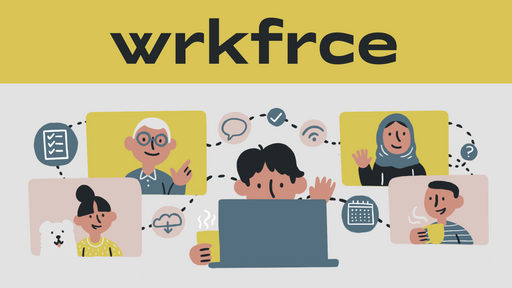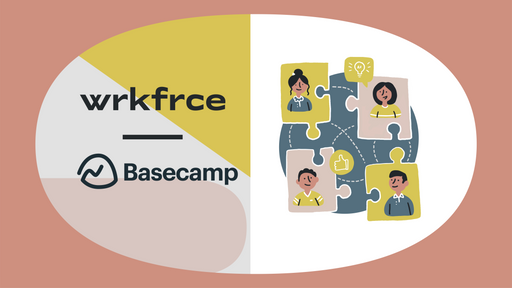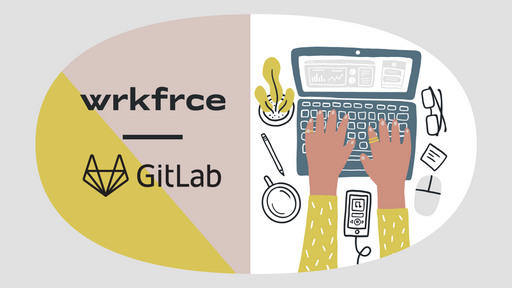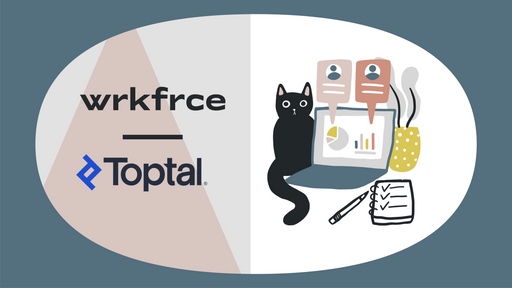wrkfrce Playbook Project: Best Practices to Hire and Onboard Remote Employees
by Sarah Archer
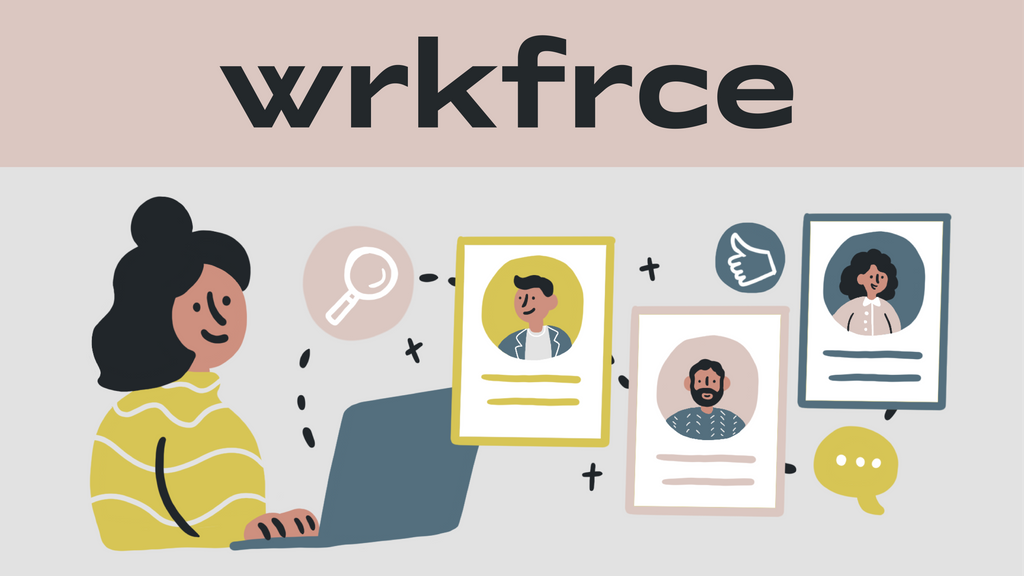
To complement our summaries of playbooks by leading remote-first companies, digital nomad Sarah Archer has put together a three-part thematic series covering everything current—and aspiring—remote businesses need to know about how to hire the best employees, collaborate with a team, and build a rock-solid company culture for even the most distributed of staff.
Hiring remote employees means you can tap the global talent market and hire based on fit versus location. But when you can’t guide prospective hires through the office and introduce them to their interviewers, you might feel like you’re unable to oversee the process as a recruiter or hiring manager.
Actually, that couldn’t be further from the truth. With processes for recruiting, hiring, and onboarding in place, you can virtually hire new employees without ever setting foot inside an office.
After spending hours reading top remote companies’ playbooks from front to back and tapping experts in the world of remote work, we’ve identified the best practices for hiring and onboarding remote employees.
Set the Stage for a Smooth Hiring Process
Before you even publish a job posting, organize your remote hiring process so it’s streamlined for you, your team, and the candidates.
Establish a Remote Work Policy
Your leadership team should develop a remote work policy for your current and prospective employees. The written document should be present on the cloud and include details that benefit both your staff and your business goals. Define when employees are expected to work, and if you’re fully distributed in various time zones, establish a four-hour window of overlap that everyone must adhere to. That way, employees can connect in real time over videoconferencing or through Slack or Microsoft Teams when everyone’s online. Be up front about the fact that employees shouldn’t feel obligated to respond after-hours; that will drive home your dedication to a healthy work-life balance.
You must also address security protocols in your remote work policy. When you’re not connected to in-office company servers, it’s crucial to keep your company’s data and intellectual property safe. Remote employees should use a password manager like 1Password or LastPass to create, manage, and save all passwords. Your file storage service like Google Drive or Dropbox should be mandatory, and nothing should be saved on a personal drive. Beyond that, automatic logins should be disabled and two-factor authentication should always be active. And without the protection of a locked office, you always want the option to wipe devices remotely.
Developing remote office expectations should be a priority, too. Make it clear that every employee should have an area dedicated to work, whether that be a home office or a coworking space. In this section of your remote policy, you can also promote the benefits of an ergonomic setup, including an office chair, a height-adjusted desk, a 27-inch second monitor, and external keyboard and mouse. Even better if you can offer a home office budget of $500–1,000 for employees to make their work space comfortable and personalized.
Once you develop this policy, you’re ready to hand it off to a new hire, mitigating any confusion about expectations up front. Even better, make the policy public-facing so that job applicants don’t encounter any surprises.
How to Recruit Top Remote Talent
There’s more to finding the best candidate for a role when your company is fully remote. You need people who are autonomous and not afraid to manage their own work without a close eye.
Know Who You’re Looking For
If you’re leading the hiring process but aren’t part of the team that the new hire will work with, hold a videoconference with the candidate’s prospective manager to understand exactly what the role entails. Learn how many years of experience the applicant should have, what education or certifications will lend themselves well to the role, and what the objectives and key results are for that person.
The same goes for identifying a fair salary. Set a compensation range for the role before you post the job, so that candidates’ cost of living doesn’t factor into your offer.
Then write a clear job posting that’s representative of the role and let the team edit it before it’s out there in the world. Be clear that the role is remote, and explain the set, overlapping work hours if you have them.
Post on Various Remote Job Boards
To get noticed by the right people, post on job boards that cater to remote workers. Candidates who have experience working remotely or who are looking specifically for remote roles often subscribe to multiple remote job boards and newsletters.
To get pre-vetted candidates to apply, create a referral program for current employees. Offer a $1,000 bonus to those who refer a candidate who gets hired (and stays for at least three months); that will help spread the word on LinkedIn and will save you time in determining a candidate's trustworthiness blindly.
Invest in an Applicant Tracking System
Use an applicant tracking system like Greenhouse or Lever to automate responses, stay organized, email references, and share information among the interviewers.
When you’re vetting applications in the tracking system, look beyond candidates’ résumés. Their cover letter will help you identify whether they’re a fit for the role (and determine their interest level). Because so much of remote work depends on effective written communication, judge an applicant’s cover letter based on their personalization and writing skills. They should explain exactly how they’re a fit for the role and the company.
Once you vet the candidates, invite prospective team members to comment on your top choices before going through the interview process, so you can confirm that you’re on the right track.
Remember That the Candidate Is Interviewing You Too
The saying “Treat others the way you want to be treated” applies to the hiring process. Even if you have the upper hand with a job offer at stake, chances are, sought-after remote candidates will be applying for other jobs too. You want to stand out for having an organized hiring process with genuinely smart and kind people on the other side of the interview.
Create a Transparent and Organized Hiring Process
Make clear when candidates can expect to hear from you from the first point of contact. For example, after the initial interview, let the candidate know that you’ll be in touch with them within two to three days. This approach will not only give the candidate a positive impression of the company’s organization but save you from answering multiple follow-up emails throughout the process.
Ask Thoughtful Interview Questions
Posing a brain teaser won’t land you the most experienced engineer, but asking questions about how their past experience will help them in the new role will. After a screening call with the candidate to confirm that they qualify for the open position, your team should prepare personalized questions for the candidate.
Ask for concrete examples of past work and create “what if” scenarios to determine if they’re a fit. Weave in questions related to their experience working remotely, including their preferred work style.
Pay close attention to those who identify as great writers, enjoy working autonomously, and have an outside support system they can interact with outside work hours.
Assign a Test Project
Candidates should be judged on a test project, rather than solely on what you see on their résumé and in their cover letter. A sample assignment will help you understand if they’re ready to tackle a real problem that they’d encounter in their role. The project should take no more than four hours for them to complete, unless you’re willing to pay for their time. Agree on a due date that works with the candidates’ schedule, answer be open to answering any questions they have before they get started.
Reach Out to References
When their manager isn’t passing their office or cubicle every so often, it’s easy for some people to get off track. That’s why, when you’re hiring someone remotely, you should be confident that they can manage their own work without much oversight.
Once you're confident about who you’ll hire, check in with one or two of their references to confirm that they’re as reliable as they say they are. Use an email template in your applicant tracking system to email the reference, and set up a ten-to fifteen-minute call with them to discuss the candidate’s background and work style.
Set Up Your New Hire for Success with Clear Onboarding
First-day jitters don’t go away, regardless of how many years of experience a candidate has. Alleviate their nerves by being prepared for their first day and beyond.
Make Day One a Breeze
Send a welcome email before a remote hire’s first day with information related to login information, your remote work policy, an organizational chart, details about your company culture, and one or two projects they can start researching without requiring too much background. For example, if you hire a marketing manager, you can ask them to describe your target customer and come up with a few ways to reach them. That way, a new hire won’t log in at 9 a.m. on day one without a clue where to start.
After a couple of hours of allowing a new hire to get settled in, kick off a video call to explain more about your company culture, who they’ll work with, what to expect in terms of communication and collaboration style, and what projects they’ll be working on. And nudge their coworkers to ping them on Slack or Microsoft Teams to say hello so they feel welcome early on.
Support New Employees with a Mentor
Not only do mentors help new employees get comfortable in a new job, but they provide remote leadership experience to more tenured employees. A mentor is a new employee’s point person who can answer questions, provide feedback, and discuss career development.
Mentors are crucial in the remote environment, as isolation can be a common feeling for someone new to a company and their people.
Ensure Psychological Safety and Check In On Mental Health
While psychological safety develops over time, it starts on the first day.
Make sure that employees are heard by opening up decision making to the entire team. Listen to everyone’s feedback; if a new hire sees there are no repercussions or reasons to be embarrassed for sharing their ideas, they’ll feel more comfortable speaking up in meetings.
The same goes for mental health. Isolation can set in quickly in a remote setting, especially if a new hire doesn’t have extensive experience working from home. Make new employees aware of their options for professional assistance, and show your support for a healthy work-life balance by making sure they don’t regularly surpass an eight-hour workday.
In the same vein, always remember that starting a new job can be overwhelming—adjusting to a new role, new company, and new colleagues is a lot. So always start video calls with five to ten minutes dedicated to talking about how a new employee is doing and how their life is outside work. And that doesn’t stop after week one—remain aware and supportive of employees’ lives outside of work.
Reiterate the Importance of Output
Make new hires aware that you’re not closely eyeing everything. Ensure trust by pointing to their objectives and key results as a way you’ll measure their success in the role. And establish growth tracks early on to show how much you care about their progress at your company; this practice will also ultimately help you shorten the hiring process later on, since you can promote internally.
Hiring and onboarding a new employee can be smooth and rewarding if you prepare a remote work policy, share expectations up front, and make it comfortable for them from day one.


